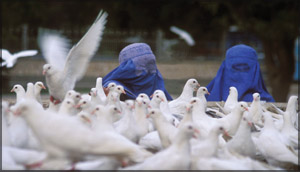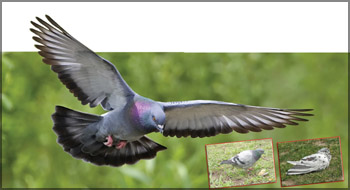Pigeon facts
by Ruwini Jayawardana
Pigeons have become a popular pet
between some youths of the era. A white pigeon is widely considered as the symbol for peace. Here are some facts that you may not have been
aware of regarding pigeons.
the symbol for peace. Here are some facts that you may not have been
aware of regarding pigeons.
Pigeons have been used to carry messages during wartime for hundreds
of years. They are pretty swift and have been known to fly at speeds of
up to 145km per hour. Little wonder that they are also used in racing
too.
The domestication of pigeons has been recorded since Ancient Egypt
(about 3000 BC)
The sultan of Baghdad established a pigeon post system in AD 1150
Pigeons were widely used for messenger services in Europe in the
1800s and for emergency message carriers in war well into the 20th
century.
The record flight for a U.S. Army Signal Corps pigeon was a flight of
3,700km and flights of 1,600km were routine.
Pigeon racing as a sport began in Belgium in 1818. The first
long-distance race of 160km was held in 1823 with a race between London
& Belgium.
There are 289 species of pigeons, and 2/3 of the species live in
Oriental and Australasian regions.
 A
bird is not considered to have arrived home until it is actually through
the trap in its loft A
bird is not considered to have arrived home until it is actually through
the trap in its loft
Some pigeons have attained speeds of 145km an hour in races.
Pigeon racing in Australia started in the 1900s
During World War II 20,000 pigeons were used in the AIF pigeon
service. Two Australian pigeons were awarded the Dicken Medal, the
animal Victoria Cross, for their services in the war in the Pacific.
Word of Napoleon's downfall at Waterloo reached England by a pigeon 4
days before the fastest couriers could carry the news by horse and ship.
Female pigeons are hens, males are cocks, and babies are called
squeakers.
Pigeons coo, but a few species have been known to whistle and hiss.
Some people believe pigeons can find their way back home because they
have an incredible sense of smell and sight, and by the magnetic field
of the earth |
